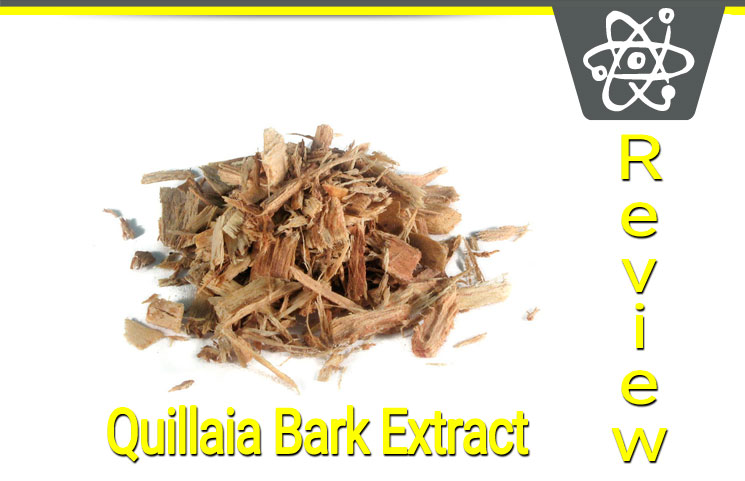Quillaia Extract Review
Quillaia Extract is comes from the bark, branches, and stems of the soapbark evergreen tree. Discover the surprising health benefits of quillaia extract today in our guide.
What is Quillaia Extract?
Quillaia extract is a natural extract that comes from the milled inner bark, small stems, or branches of the soapbark tree. The soapbark tree is also known as the Quillaja saponaria, which is where the name Quillaia Extract comes from.
Other names for Quillaia extract and the Soapbark tree include China bark extract, Murillo bark extract, Panama bark extract, Quillai extract, Quillay bark extract, and Soapbark extract.
You might recognize the name quillaia from a surprising source: if you look at the ingredients list for some root beers and cream sodas, you might see Quillaia extract listed on the side. It’s a popular food additive that can also be found in frozen dairy products and pudding.
When used as a food additive, quillaia extract is classified as E number 999 and is used as a humectant, which means that it keeps foods moist. It can also commonly be found as a foaming agent in soft drinks.
Other applications for quillaia extract include as a “natural” agricultural spray or as a topical cream to soothe irritated skin.
How Does Quillaia Extract Work?
Quillaia extract is thought to work because it contains a high concentration of saponins. Saponins are glycosides with a distinctive foaming characteristic. They’re found in many types of plants.
Many plants containing saponins have been traditionally used as soaps because they act as foaming agents. That’s why the quillaia plant is also known as the “Soapbark” tree. Get it?
When used for medical purposes, the saponin levels in quillaia extract are increased through manufacturing techniques. When a high enough concentration of saponins is reached, Quillaia extract can be used to enhance vaccines and provide other medical benefits.
Saponins aren’t the only compounds found within Quillaia extract. Other compounds include:
— Tannins
— Polyphenols
— Calcium oxalate
Today, a company named Dalsgaard has purified the benefits of quillaia extract and created a mixture called Quil A. That mixture contains 25 different saponin molecules, including one molecule named QS21 that is being investigated for its beneficial effects on the human immune system.
As you’ll learn below, quillaia extract is sometimes used to treat breathing problems. When used for this purpose, quillaia is thought to work because it contains high concentrations of astringent chemicals (most notably tannins) that can thin mucous, making it easier to cough up that mucous and clear your breathing pathways.
Benefits of Quillaia Extract
The inner bark of the quillaia plant – quillaia extract – is relatively understudied. However, this hasn’t stopped people from using the extract as a medicine. Some of the suspected benefits and treatments for quillaia include:
— Treatment for cough, bronchitis, and other breathing problems
— Applied directly to the skin to treat skin sores, athlete’s foot, and itchy scalp
— Sometimes included in shampoos to treat dandruff
— Used in hair tonic preparations to treat thinning hair and encourage thicker, fuller hair growth
— Used in douches to treat vaginal discharges
— As mentioned above, quillaia extract is also a common food additive, where it acts as a preservative in candy, baked, goods, gelatins, and puddings.
— It also acts as a foaming agent in root beer and other soft drinks.
— Today, some manufacturers are also using quillaia in skin creams because of the topical benefits listed above.
— Finally, in South America, quillaia bark is sometimes used to wash clothes
Side Effects of Quillaia
WebMD.com reports that quillaia “seems to be safe when taken in food amounts.”
However, the site cautions that quillaia may be unsafe when taken by mouth in medicinal doses:
“Plants such as quillaia that contain high amounts of tannins can cause stomach and intestinal disturbances, and kidney and liver damage. Quillaia also contains chemicals called oxalates that can lower bloodcalcium levels and cause kidney stones.”
With that in mind, the side effects of quillaia can include all of the following:
— Diarrhea
— Stomach Pain
— Serious Breathing Problems
— Convulsions
— Coma
— Red Blood Cell Destruction
— Kidney Failure
— Irritation of the Mouth, Throat, and Digestive Tract
Those who currently have – or are at risk of developing – stomach and intestinal problems are not advised to take quillaia extract, as it can exacerbate these problems. You should also not take quillaia extract if you have kidney disease or are pregnant or breastfeeding.
Despite these scary-sounding side effects, quillaia is Generally Recognized As Safe (GRAS) by the United States Food and Drug Administration (FDA). You can read the FDA’s ruling on quillaia extract here.









